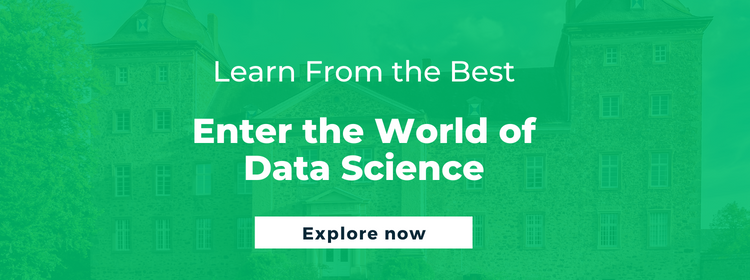9 Efficient Data Collection Methods and How to Choose the Best One

- What is Data Collection?
- Data Collection Methods
- Data Collection Method 1: Surveys
- Data Collection Method 2: Tracking Transactions
- Data Collection Method 3: Observing People
- Data Collection Method 4: Focus Groups
- Data Collection Method 5: One-on-One Interviews
- Data Collection Method 6: Online Tracking, Pixels, and Website Cookies
- Data Collection Method 7: Monitor Social Media Channels
- Data Collection Method 8: Niche Online Forums
- Data Collection Method 9: Historical Documents and Records
- Tips for Choosing a Data Collection Method
In a data-driven world, the approach toward acquiring new data defines business outcomes and generates innovative avenues of profit. Understanding the different data collection methods is therefore key to consolidating the highest-quality data. But what are the different data collection methods out there and how do they ensure an accurate conversion of unstructured data into actionable insights? Comprehensive data collection is the first step to data purity. A 2021 Data Science Process Alliance report underlines that 85% of big data projects fail due to the incorrect application of data-cleaning and data-modeling procedures. Let’s delve into some of the best data collection techniques, their benefits and risks, and how to choose the one that’s best suited to your needs.
What is Data Collection?
 The various processes that organizations undertake to consolidate unstructured data and extract valuable relevant information, fall under the umbrella category of data collection. There are two major categories of data collection methods—primary and secondary. Primary data collection refers to the unique unused data collected from first-hand experiences while secondary data is typically derived from historical sources.
The various processes that organizations undertake to consolidate unstructured data and extract valuable relevant information, fall under the umbrella category of data collection. There are two major categories of data collection methods—primary and secondary. Primary data collection refers to the unique unused data collected from first-hand experiences while secondary data is typically derived from historical sources.
Data Collection Methods
Data collection methods heavily influence data hygiene. Back in 2015, IBM pointed out that businesses worldwide lose around $3 trillion to inaccuracies in data management. Gartner’s recent analysis corroborates IBM’s claim that the yearly cost of poor-quality data is a staggering $12.9 million. Superior data collection practices are a central aspect of data management and ensure that the available information is accurate, structured, and sophisticated.
ALSO READ: What is Statistical Modeling? How Does it Help Companies Grow?
Data Collection Method 1: Surveys
Surveys collect first-hand information from specific target groups (depending on the industry and choice of information) to gather insights aimed at improving the quality of products and services. There is an abundance of software systems that offer a comprehensive range of questionnaires and readymade survey templates.
Benefits
- Efficient and time-effective
- Does not require heavy technical knowledge to operate
- Can be remotely administered
- Comprises broad ranges of data sets, such as subjective opinions, beliefs, and attitudes
Potential Downsides and Risks
- Subjective opinions may not be accurate
- Nonresponsive questions lead to data bias
- Close-ended questions lead to lower data validity
- Participants are wary of answering questions that may project them in an adverse fashion
Data Collection Method 2: Tracking Transactions
This method comprises various data points associated with a particular transaction, such as its geographical location, the exact time of the transaction, its price points, the deployed payment methods etc. The aim is to duly map consumer behavior and market dynamics in various fields, from banks to marketing agencies.
Benefits
- Enhanced consumer experience tailored according to information
- Consistent information storage without any data tampering
- Instantaneous data collection
- Accurate predictive analysis of consumer behavior
- Superior diagnostics that optimize operations and data management
- Reduces failures in transaction processing
Potential Downsides and Risks
- Demands complex analytical processes
- Chances of database collapse are high due to their complexity
- Databases are non-writable so changes in copies won’t get reflected in the original
ALSO READ: How to Become a Data Analyst and Help Draw Insights for Businesses
Data Collection Method 3: Observing People
It is a qualitative data collection method that comprises watching, listening, and recording subjects’ behaviors, characteristics, and attitudes in their natural environments. The aim is to observe patterns and gain insights about their psychological characteristics.
Benefits
- It requires minimum technical knowledge to perform observations
- Puts the subjects at ease as they are in their natural circumstances and territories
- It is extremely beneficial for sensitive subjects unable to read, write, or speak
- Data accuracy is very high as in-depth information about subjects is guaranteed
- Works efficiently on infants as the focus is primarily on verbal/visual information
Potential Downsides and Risks
- One of the most expensive data collection methods
- Demands sophisticated tools for analyzing observations
- The process is time-consuming and subjects may lose interest in following through with the extensive process
- No chance to objectively study the past of the subjects
Data Collection Method 4: Focus Groups
It is a qualitative data collection technique that carefully chooses a small number of subjects who share certain common characteristics and interests. They are provided with a topic to discuss, the aim being to observe their behaviors and differing perspectives about the same issue.
Benefits
- Provides the best-quality in-depth information on perceptions, experiences, attitudes, and beliefs of select groups
- Very cost-effective and easy to set up
- Focus groups invite conversations that may be difficult to bring into observational models
- More candid conversations lead to high data accuracy
- Aids other quantitative analytical models with deep or sensitive insights
Potential Downsides and Risks
- Success rates depend on unbiased hosting by the facilitator
- Chance of domination by subjects with high verbal intelligence
- The process requires meticulous planning in advance
- The acquired information is not universal
Data Collection Method 5: One-on-One Interviews
This is one of the most ubiquitous data collection methods applicable across industries to analyze a wide range of differing opinions and perspectives.
Benefits
- Attitudes, emotions, behaviors, body language, and nonverbal gestures can be captured
- The process is very flexible
- Enhances individualized healthcare and social research
- Accurate screening of participants
- Can be administered online or remotely
Potential Downsides and Risks
- The process is expensive because it involves hiring staff to find interested participants
- The success rate depends on the efficiency of the interviewer
- Makes generalized conclusions a difficult feat to achieve
Data Collection Method 6: Online Tracking, Pixels, and Website Cookies
They refer to a set of tools that track user behavior to collect and transfer consumer information from websites to analytical software systems. Tracking pixels and website cookies have become indispensable marketing tools for advertising and marketing services.
Benefits
- Provides deep insights into user behavior, page performance, and web traffic
- Strengthens and extends databases with efficient web analysis tools
- Efficient strategizing of social media campaigns
- Enhanced user personalization and website experience
- Successfully tracks the number of successful checkouts
- Tracking user behavior without delaying website loading time
Potential Downsides and Risks
- Tracking pixels can be exploited to create spam emails
- Data protectionists are wary of tracking pixels operating in the background and users aren’t often aware of the entire scope of collected data
- Selling of personal information to third parties comes with a heavy risk of privacy breaches for users
Data Collection Method 7: Monitor Social Media Channels
This data collection method gathers information on real-time user behavior. It involves tracking the engagement reach of posts, the growth of follower count, and frequency of profile visits. It also analyzes brand sentiments and impressions, such as likes and follows on individual posts.
Benefits
- Ensures authentic understanding of the audience
- Efficiently fixes target groups for specific social media campaigns
- Speeds up the response time for social media posts, campaigns, and reports
- Guarantees instant user feedback
- Enhances brand credibility
- Increases productivity and team performance
- Enhances SEO optimization
Potential Downsides and Risks
- Risks invasion of user privacy and possibility of ethical distrust
- Implementing suitable social media monitoring policies is time-consuming and expensive
- Involves a legal risk as different states and countries have different legal compliances
Data Collection Method 8: Niche Online Forums
Data collection from niche online forums represents collecting asynchronous data sets. This is a viable technological alternative to traditional focus groups. Online forums can engender a variety of stand-alone questions, discussions and opinion polls among participants.
Benefits
- Asynchronous data collection enables the participation of people from different demographics
- Ensures that participants have a choice of anonymity
- Questions have a diverse range
- Discussion threads make it easier for individuals to join at their convenience
- Provides quick access to data and enables cost-effective empirical research
Potential Downsides and Risks
- Less guarantee for accurate information due to imprecise knowledge and the lack of transparency of online sources
- Difficult for participants with unstable connectivity
- Inconsistent motivation of participants
- Data cleaning is a major challenge
Data Collection Method 9: Historical Documents and Records
This is a secondary data collection method that borrows information from pre-existing research material. Historical documents include a variety of sources such as digitized and non-digitized databases, government reports such as census records and population charts, minutes of previous meetings, newspaper reports, and financial records.
Benefits
- It’s detailed and saves quality research time
- Useful for trend analysis
- The only feasible way to study and make sense of old data
- Allows deep insights into topics that one cannot recreate
Potential Downsides and Risks
- Raises ethical questions about using personal data sources
- Data retrieval is often time-consuming
- Subjective interpretations lead to data bias
- Contradictory sources can create confusion
ALSO READ: What is Data Governance? Why is it So Important for Organizations?
Tips for Choosing a Data Collection Method
To decide on the right data collection methods, one has to thoroughly analyze their aims and needs. Choosing the best data collection method entails a balanced comprehension of the following questions.
- Which type of data does the analysis demand?
- What is the amount of data that the analysis requires?
- How much data can be collected surrounding the analysis?
- What is the accuracy percentage required for the collected data?
- How quickly is the data required?
- Who is in charge of collecting the data?
- What is the allotted capital for data collection?
To unlock the full potential of data analytics and delve deeper into the various data collection methods, check out the latest Emeritus courses on data science. Happy learning!
Write to us at content@emeritus.org

















